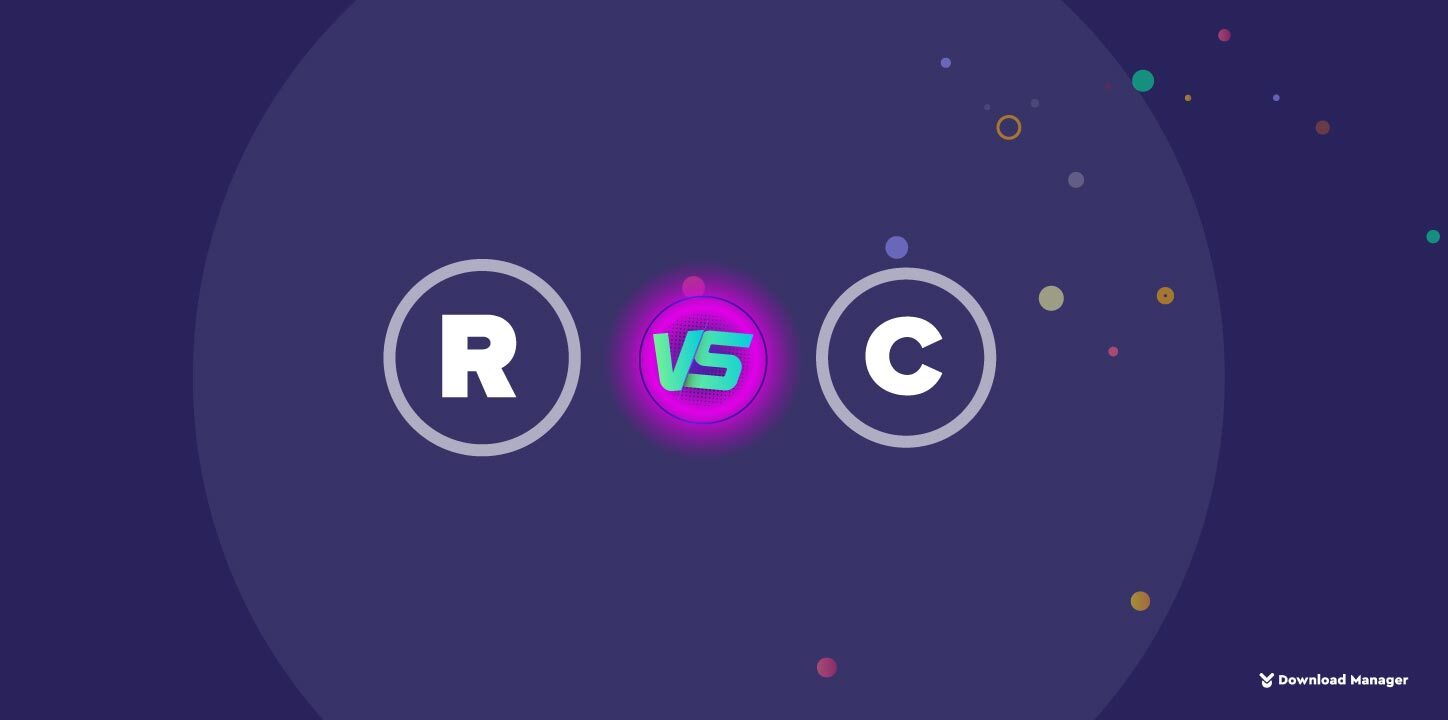
Trademark vs. Copyright: Everything You Need To Know
In the fast-paced world of intellectual property, two key legal concepts often emerge as essential tools for protecting creative works and business assets: trademarks and copyrights. These two pillars of intellectual property law play distinct yet equally crucial roles in safeguarding the rights and interests of creators, entrepreneurs, and businesses. “Trademark vs. Copyright: Everything You Need To Know” is a comprehensive exploration that delves into the intricate realm of intellectual property, offering a detailed comparison of trademarks and copyrights. Whether you’re an artist seeking to protect your original creations, a business owner aiming to secure your brand identity, or simply someone curious about the differences between these legal mechanisms, this guide will provide you with the insights and knowledge necessary to navigate the intricate world of intellectual property protection. Go through this enlightening article to empower you to make informed decisions and safeguard your intellectual assets effectively.
What is Trademark?

Individuals, businesses, or organizations use a trademark to distinguish their goods or services from those of others, utilizing a distinctive sign, symbol, logo, word, phrase, or a combination of these elements. Trademarks are a form of intellectual property and serve as a means of brand identification and protection in the marketplace.
Trademarks are essential for businesses to establish their brand identities, build consumer trust, and prevent competitors from using similar marks to exploit their brand’s reputation. Trademark infringement, the unauthorized use of a registered trademark, can lead to legal action and potential damages for the infringing party. Therefore, businesses often invest significant resources in creating and safeguarding their trademarks.
Key Features of Trademark:
Distinctive Identity:
Trademark designs aim for uniqueness and easy distinction. They serve as a visual or textual representation that helps consumers identify and differentiate one brand’s products or services from those of competitors. This distinctiveness is crucial for preventing consumer confusion and building brand recognition.
Brand Recognition:
At this time, a well-established trademark becomes closely associated with a particular brand’s quality, reputation, and credibility. It acts as a powerful tool for building brand loyalty and trust among consumers. When people see a recognized trademark, they often have certain expectations about the products or services it represents.
Legal Protection:
Legally, trademarks protect intellectual property. Their owners have the exclusive right to use the trademark on their products or services within the designated category or classes. This legal protection ensures that competitors cannot use a similar mark in a way that could cause confusion among consumers or dilute the distinctiveness of the trademark.
Renewable:
As long as individuals or organizations actively use and maintain them, they can renew trademarks indefinitely. This means that well-established brands can continue to protect their trademarks over the long term, preserving their brand identity and reputation.
Geographical Scope:
Typically, individuals or organizations register trademarks at the national or regional level, thereby obtaining protection within a specific jurisdiction. However, some international agreements and treaties, such as the Madrid Protocol, facilitate trademark protection across multiple countries, allowing businesses to protect their trademarks internationally.
Prevention of Infringement:
Trademarks grant their owners the legal right to prevent others from using a similar or identical mark on related goods or services. This helps protect the trademark owner’s market share and reputation by preventing competitors from exploiting the goodwill associated with the trademark.
Consumer Trust:
A strong trademark can instill trust and confidence in consumers. When people see a recognized and respected trademark, they are more likely to choose products or services associated with that trademark over unfamiliar or generic alternatives.
Asset Value:
Businesses can consider trademarks as valuable assets with significant financial value. One can buy, sell, license, or use them as collateral for loans. Additionally, well-known trademarks can even become iconic and highly valuable in their own right.
Preventing Counterfeiting:
Trademarks are a crucial tool in combating counterfeiting. They provide legal grounds for taking action against individuals or organizations producing counterfeit goods bearing the protected trademark.
Overall, trademarks are essential for businesses and brands to establish and protect their unique identities, build consumer loyalty, and maintain their competitive edge in the marketplace.
What is Copyright?

Copyright is a form of intellectual property protection granted to the creators of original literary, artistic, and intellectual works. It grants the creator or copyright holder exclusive rights to control how their work is reproduced, distributed, performed, displayed, and adapted for a certain period. Hence, copyright is designed to incentivize creativity and protect the rights of creators by giving them control over how their works are used and by providing a means for them to benefit from their creations.
Copyright is an essential tool for protecting creative works and ensuring that creators can benefit from their intellectual endeavors. However, it encourages innovation and creativity by providing legal safeguards and economic incentives for authors, artists, musicians, filmmakers, and other creators to continue producing new works.
The Key Features of Copyright:
Automatic Protection:
Copyright protection is granted automatically upon the creation of an original work. You don’t need to register the work or include a copyright notice for it to receive protection. As soon as a work is fixed in a tangible form that is perceptible either directly or with the aid of a machine or device (e.g., writing a book, recording a song, or creating digital content), it is covered by copyright.
Originality:
Original works of authorship fixed in a tangible medium of expression receive copyright protection. This means that the work must be the product of the author’s creativity and must exist in a concrete form, such as a book, painting, or digital file.
Exclusive Rights:
Copyright holders have the exclusive right to control how their works are used. This includes the right to reproduce, distribute, display, perform, and create derivative works based on the original.
Limited Duration:
Copyright protection is not perpetual. In most countries, including the United States, copyright typically lasts for the life of the creator plus an additional 70 years after their death. However, after this duration, the work enters the public domain, and anyone can use it without permission.
No Formal Registration Required:
While creators automatically receive copyright upon creation, they can opt to register their works with the relevant copyright office. Registration can provide additional legal benefits, such as the ability to sue for statutory damages and attorney’s fees in case of infringement.
Scope of Protection:
Copyright covers a broad range of creative works, including literary works (e.g., books and articles), musical compositions, visual art (e.g., paintings and photographs), dramatic works (e.g., plays and scripts), and even software code.
International Protection:
Copyright protection is recognized internationally through various treaties and agreements, such as the Berne Convention. This allows creators to have their works protected in multiple countries.
Broad Range of Creative Works:
Copyright protection applies to a wide range of creative works, including literary works (e.g., books, articles, and poems), musical compositions, visual art (e.g., paintings, photographs, and sculptures), dramatic works (e.g., plays and screenplays), and even software code.
Fair Use and Exceptions:
Copyright law includes provisions for fair use (or fair dealing in some jurisdictions), which allow limited use of copyrighted materials without permission for purposes like education, criticism, commentary, and news reporting. However, these exceptions vary by jurisdiction and are subject to specific conditions.
Economic Rights:
Copyright gives creators the ability to profit from their works through licensing, royalties, and other financial arrangements. Consequently, this economic incentive encourages the creation of new works.
Moral Rights:
In certain countries, copyright law includes moral rights that protect the personal and reputational interests of authors. These rights may encompass the right to receive attribution as the author and the right to raise objections to derogatory treatment of the work.
Transfer of Rights:
Copyright holders can choose to transfer or license their rights to others, such as publishers, record labels, or movie studios, allowing these entities to exploit the work commercially.
As I have shown, copyright is a fundamental tool for protecting the rights of creators and encouraging creativity by providing legal safeguards and incentives for authors, artists, musicians, filmmakers, and other creators to produce and share their work.
Trademark vs. Copyright:
Here’s a descriptive comparison table highlighting the key differences between trademarks and copyrights:
| Aspect | Trademark | Copyright |
|---|---|---|
| Nature of Protection | Protects brand identity and source recognition | Registration is typically required (but not always) |
| What’s Protected | Symbols, logos, brand names, slogans, trade dress | Literary works, music, art, software, and more |
| Registration | Registration typically required (but not always) | Automatic upon creation (registration optional) |
| Duration | Renewable indefinitely with proper use and maintenance | Life of the author plus 70 years (varies by country) |
| Geographic Scope | Usually limited to specific countries or regions | International protection through treaties |
| Exclusive Rights | Exclusive right to use and license the mark | Exclusive rights to reproduce, distribute, perform, and adapt the work |
| Common Examples | Logos (e.g., Nike swoosh), brand names (e.g., Coca-Cola), slogans (e.g., “Just Do It”) | Novels, music compositions, paintings, sculptures, software |
| Enforcement | Enforced against confusingly similar marks | Enforced against unauthorized use or reproduction |
| Renewability | Renewable indefinitely as long as actively used and maintained | Automatic and lasts for a specific duration |
| Public Domain | Does not enter the public domain | Enters the public domain after copyright expires |
| Fair Use | Limited exceptions (e.g., nominative fair use) | Allows for fair use for purposes like education, criticism, and commentary |
| International | Protection varies by country/region | Recognized internationally through treaties like the Berne Convention |
| Beneficiaries | Businesses, brand owners, product/service providers | Authors, creators, artists, and content producers |
On the whole, this comparison table provides a clear overview of the distinct characteristics and applications of trademarks and copyrights. in the realm of intellectual property protection.
Conclusion:
In conclusion, the journey through the intricacies of trademarks and copyrights has unveiled the multifaceted world of intellectual property protection. We’ve explored the distinctive roles that trademarks and copyrights play in safeguarding creative works and brand identities.
Trademarks stand as guardians of brand recognition, offering businesses the means to set themselves apart in a crowded marketplace. They provide a shield against confusion and imitation, fostering trust and loyalty among consumers.
On the other hand, copyrights form the bedrock of creativity, empowering authors, artists, and innovators to protect their original works. They ensure that the fruits of their labor are respected, encouraging ongoing innovation and artistic expression.
In a world where ideas and creations hold immense value, trademarks and copyrights stand as beacons of protection, enabling us to celebrate, preserve, and share the richness of human innovation and imagination. Armed with this knowledge, you are better equipped to embrace the world of intellectual property, ensuring that your creative works and brand identities remain cherished and secure assets in the dynamic tapestry of commerce and culture.
Follow our Blog page so that you can gather more knowledge. Also, if this article will help you please subscribe to our YouTube channel to get more tutorials related to WordPress. You may join our Facebook page to update yourself with more tips, solutions, offers, and so on.









